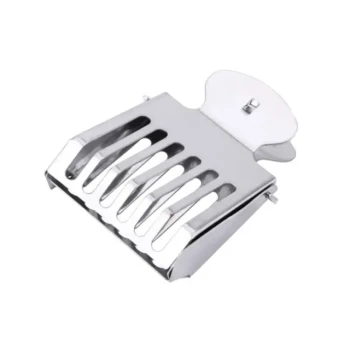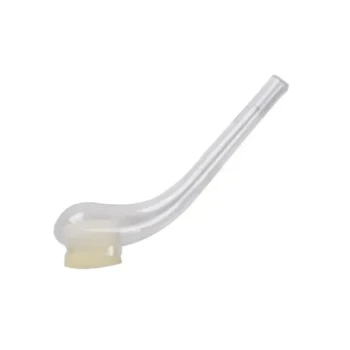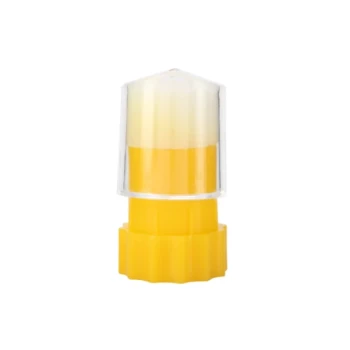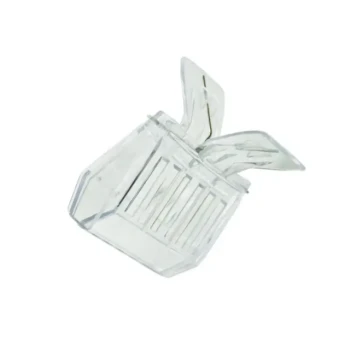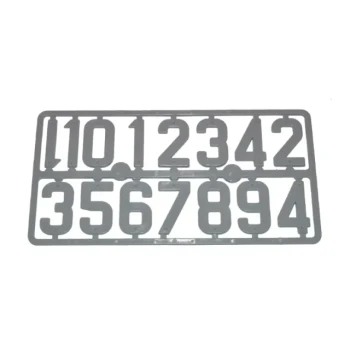The optimal time to transfer a queen cell is on Day 11 of its development, one day before the queen is expected to emerge. These mature, or "ripe," cells are durable enough for transport but close enough to emergence that the new queen will hatch directly into her new home. This timing is critical for ensuring the virgin queen is immediately accepted and cared for by the worker bees in the mating nuc.
The core principle is to move the queen cell when it is fully developed and just 24-48 hours from emergence. This minimizes the risk of damage during handling while ensuring the queen emerges within the protective environment of the mating nuc, not in an incubator or in transit.
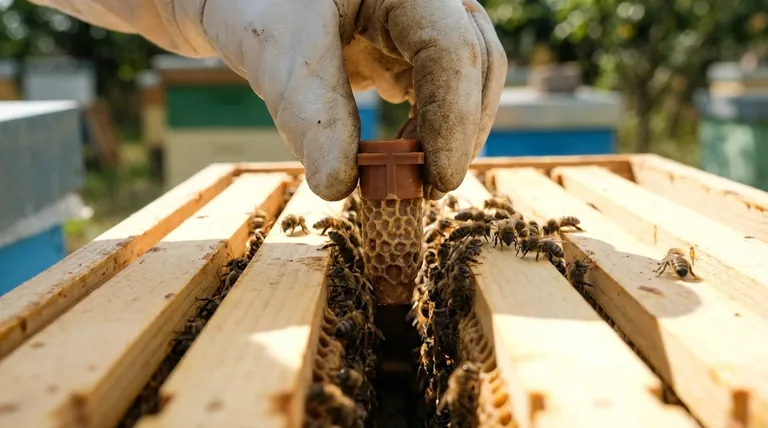
The Critical Timeline: From Sealed Cell to Emergence
Successful queen rearing hinges on a precise schedule. A queen's development follows a predictable 16-day cycle from egg to adult, but the final days are the most crucial for transfer.
Day 9-10: The Cell is Sealed and Stable
At this stage, the pupa has fully developed inside the cell, and the cell itself is completely sealed with wax. It is now robust enough to be carefully handled and moved from the cell builder colony into an incubator for holding.
This is often the point where queen producers prepare cells for shipment or organization.
Day 11: The "Ripe" Stage for Transfer
This is the ideal day to introduce the queen cell into a mating nuc. The cell is considered "ripe," meaning the queen is fully formed and will emerge shortly.
Transferring on Day 11 gives the colony a brief period to acclimate to the cell's presence before the queen emerges.
Day 12: Anticipated Emergence
The virgin queen will typically chew her way out of the cell on or around Day 12. By emerging directly into the mating nuc, she is immediately surrounded by nurse bees who will feed and protect her as she prepares for her mating flights.
Proper Handling and Placement: The Key to Success
Timing is only half the battle. How you physically place the cell into the mating nuc is just as critical to prevent failure.
Ensuring Correct Orientation
Queen cells must be oriented vertically, with the tip pointing down, mimicking their natural position. Gently press the plastic cup or cell base into the wax between two brood frames so the cell hangs securely.
Maintaining Temperature to Prevent Chilling
A queen cell cannot regulate its own temperature. It relies on the ambient heat of the brood cluster to survive.
In all conditions, but especially in cooler weather, the cell must be placed in the center of the brood nest. Direct contact with the brood and surrounding bees is essential to prevent the pupa from chilling and dying.
Understanding the Trade-offs: Timing and Risk
Deviating from the ideal timeline introduces significant risks that can lead to the loss of your new queen.
The Risk of Moving Too Early
Moving a cell before it is fully sealed (prior to Day 9) makes it extremely fragile. The developing pupa can be easily damaged or dislodged by jarring, leading to death or deformities.
The Risk of Moving Too Late
Waiting until Day 12 or later is a major gamble. The primary risk is that the queen will emerge outside of the mating nuc—either in the incubator or during transport. An unchaperoned virgin queen is highly vulnerable and likely to be lost.
The Non-Negotiable Need for Heat
Failing to place the cell within the warmth of the brood cluster is a common and fatal error. A chilled cell is a dead cell, regardless of perfect timing.
Making the Right Choice for Your Goal
Your primary objective will guide your application of these principles.
- If your primary focus is maximizing success rates: Transfer ripe cells on Day 11 and ensure they are placed directly in the center of the brood nest for warmth.
- If you are receiving cells from a producer: Confirm their age upon arrival and plan to install them immediately if they are at or near Day 11.
- If you are working in cool spring or fall weather: Prioritize thermal protection above all else; the cell must be in contact with the warm brood cluster.
Adhering to this precise timing and placement protocol is the foundation of consistently producing healthy, viable queens.
Summary Table:
| Day | Development Stage | Action | Key Consideration |
|---|---|---|---|
| Day 9-10 | Cell is sealed and stable | Prepare for transfer or incubator holding | Cell is robust enough for careful handling |
| Day 11 | "Ripe" stage | Ideal time for transfer to mating nuc | Queen emerges 24-48 hours after placement |
| Day 12 | Anticipated emergence | Queen hatches in mating nuc | Immediate acceptance by worker bees is critical |
Upgrade Your Queen Rearing Success with HONESTBEE
Maximize your queen acceptance rates with professional-grade equipment from HONESTBEE. We supply commercial apiaries and beekeeping equipment distributors with durable, precision-engineered mating nucs and essential queen rearing supplies. Our wholesale-focused operations ensure you get reliable equipment that supports the precise timing and thermal protection your queen cells need.
Contact HONESTBEE today to discuss your commercial beekeeping supply needs and elevate your queen production program.
Visual Guide
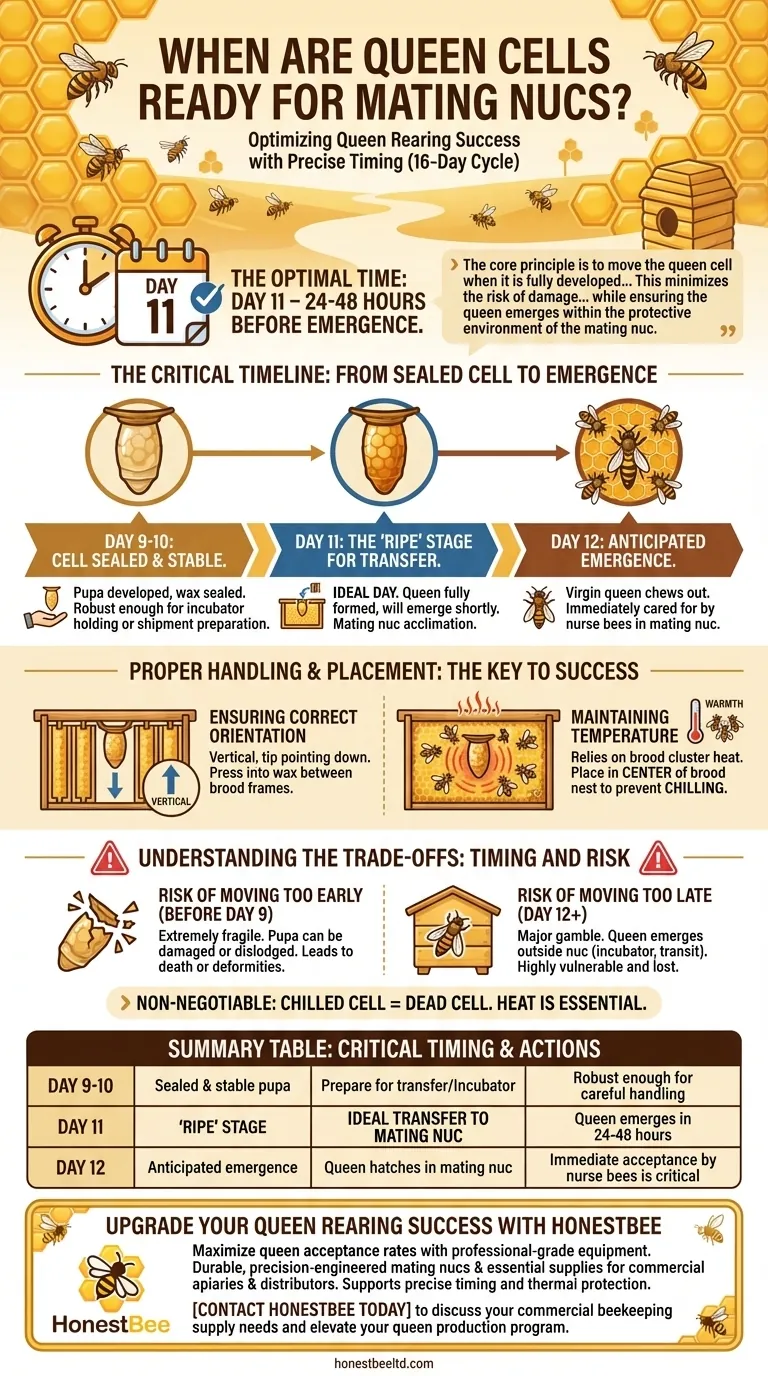
Related Products
- Brown Nicot Queen Cell Cups for Breeding Queen Bees Beekeeping
- Clear Black Plain Polystyrene Queen Bee Grafting Cell Cups No Lug for Bee Queen Cup
- Plastic Chinese Queen Grafting Tool for Bee Queen Rearing
- Stainless Steel Queen Grafting Tool for Beekeeping and Bee Queen Grafting
- Double Head Beekeeping Grafting Tools for Beekeepers
People Also Ask
- What is the benefit of inducing supersedure by giving a queenright colony a protected queen cell? A Seamless Requeening Method
- How are the queen cells raised after removing the plugs? Master the Art of Queen Rearing
- What role does the natural swarming process play in queen rearing? Harness the Swarm Instinct for Better Queens
- What should be done with extra queens from grafting? A Strategic Guide for Apiary Management
- How does Queen Rearing with JZBZ work? A Reliable System for Consistent Queen Production





